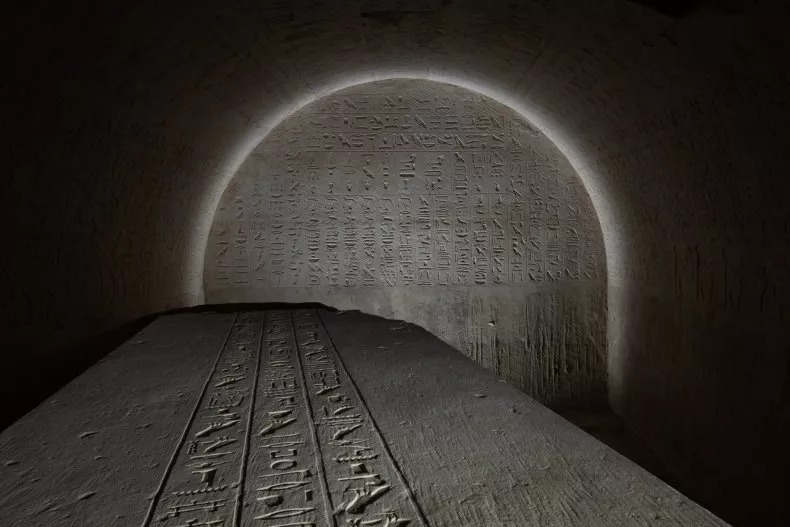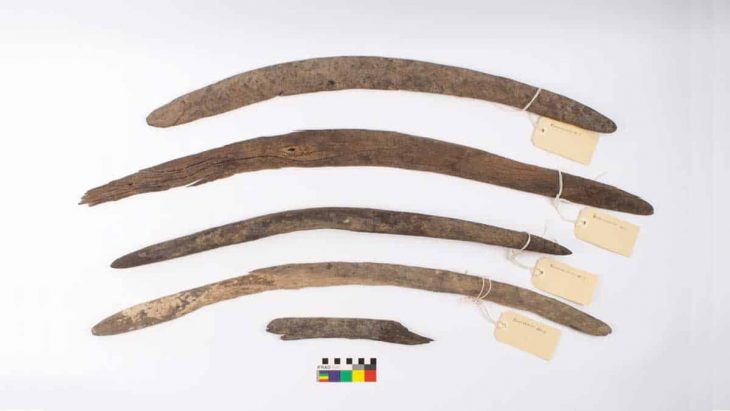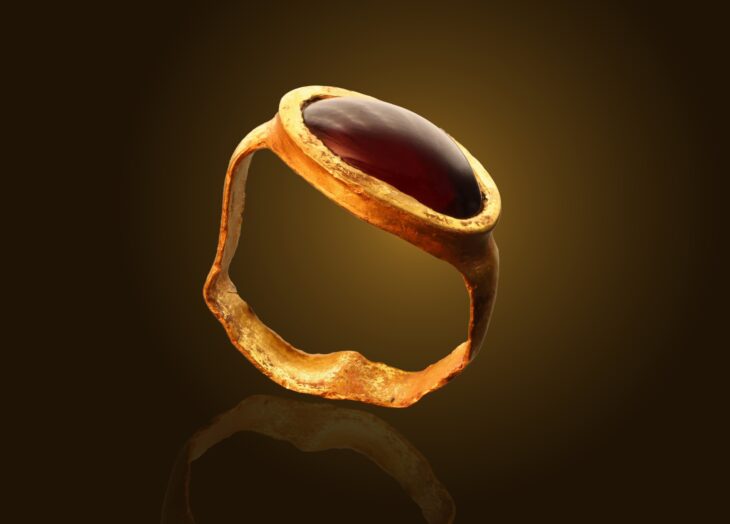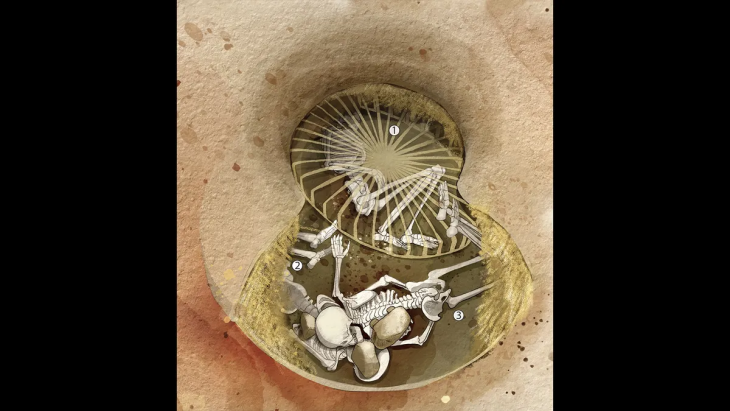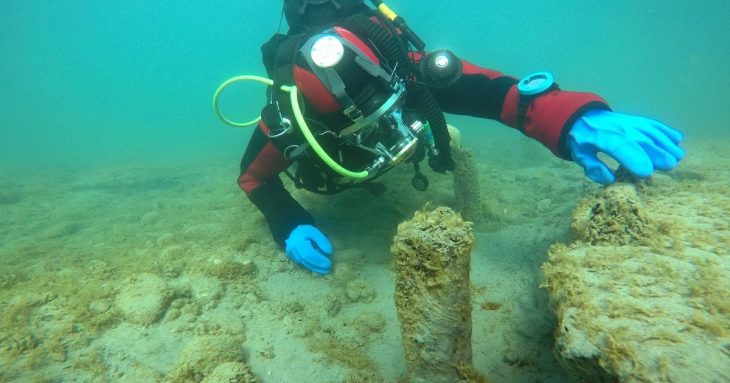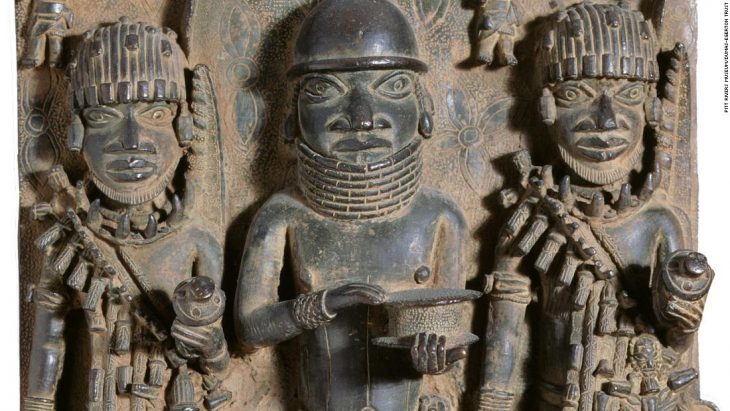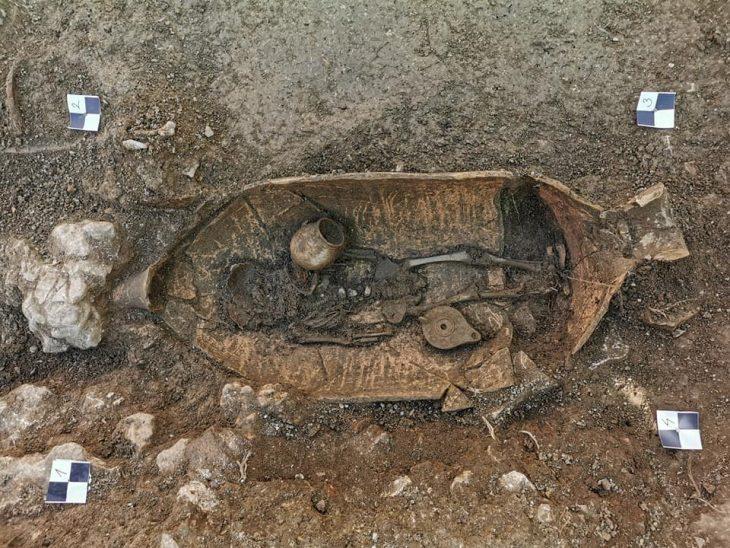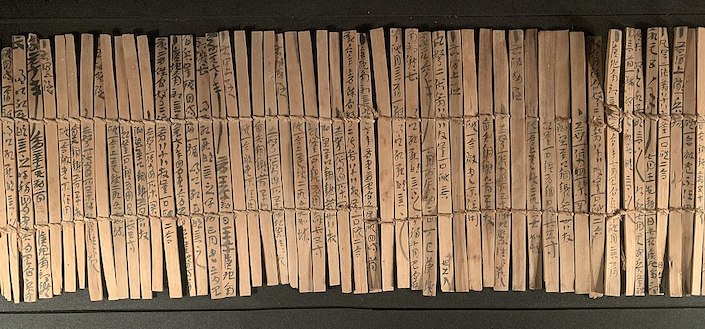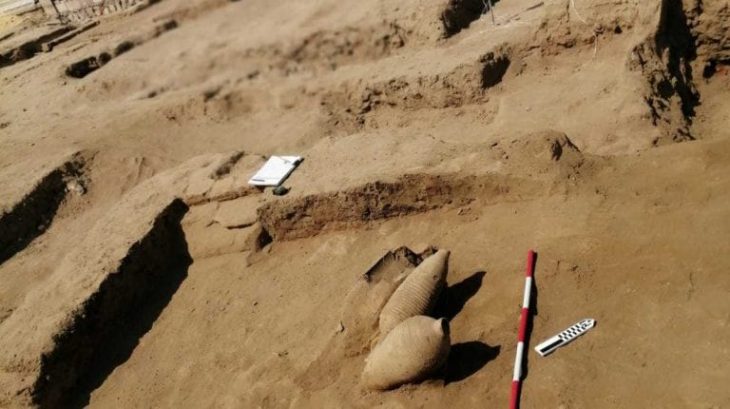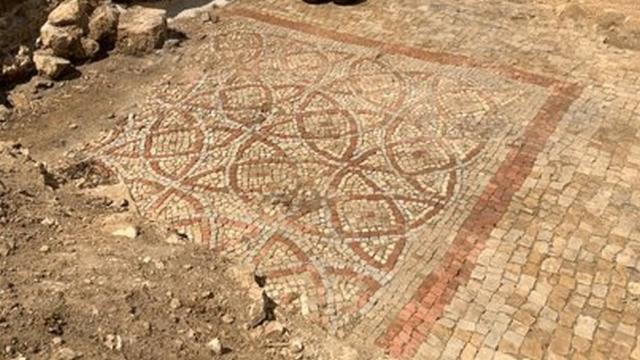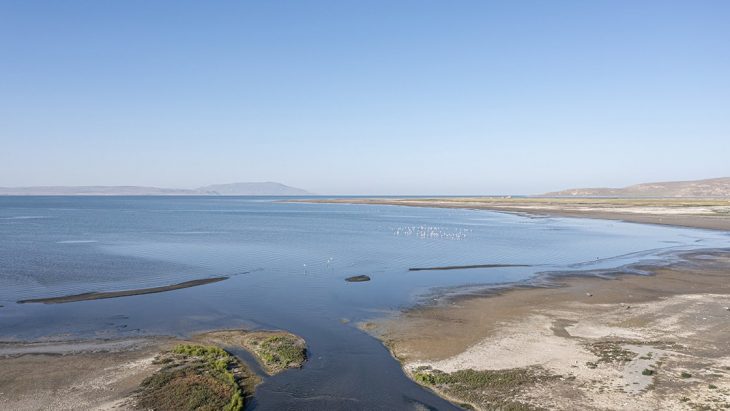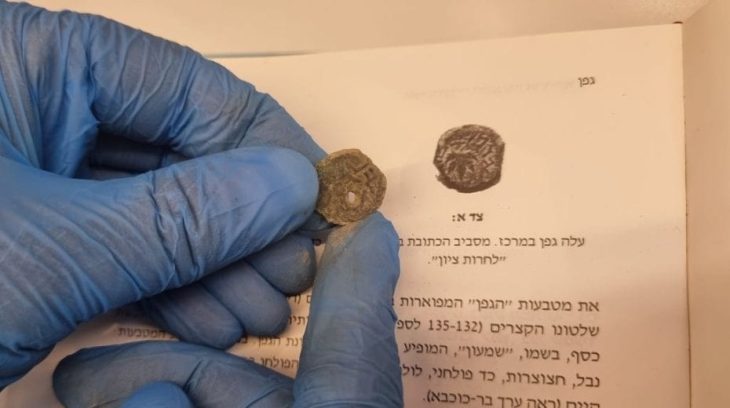During excavations at Abusir, between Giza and Saqqara, archaeologists at the Czech Institute of Egyptology (CIE) found an ancient tomb with magic spells that protect the tomb’s occupant against snake bites. The tomb is dated to the 1st millennium BC.
The tomb was uncovered during excavations conducted in April and May, the Czech Institute of Egyptology (CIE) at Charles University in Prague, which led the investigations, announced Friday.
The archaeological site of Abusir is known for its extensive necropolis and pyramid complexes that date back to the Old Kingdom period (2686-2181 BC).
The newly discovered tomb is located in a western section of Abusir that served as a cemetery for high-ranking officials and military commanders from ancient Egypt’s 26th and 27th dynasties.
“It is a richly decorated shaft tomb of medium size, whose owner, a certain Džehutiemhat, held the office of the royal scribe,” explains Ladislav Bareš, who has been coordinating the research of Abusir shaft tombs for a long time.
Analysis of bones recovered from the tomb has determined that Djehutyemhat died at a relatively early age of about 25 years, showing signs of some kind of “occupational disease” (spinal wear), possibly due to sedentary work. He suffered from acute osteoporosis.

The tomb is a medium-sized shaft tomb adorned with an array of inscriptions, artwork, and texts. Notably, its northern wall features a series of spells designed to safeguard against snake bites. During this era, venomous snakes were a constant threat, and these spells were crucial for protection. Interestingly, the spells also depict snakes as powerful guardians of the deceased and their mummy.
“The snakes mentioned in these magical texts were a potential danger and could serve as powerful protectors of the deceased and his mummy,” the scientists noted.
Renata Landgrafova, director of the Czech Institute of Egyptology and an expert on ancient Egyptian language and texts, noted that the southern and western walls of the tomb were painted with drawings of sacrificial rituals and a long list of victims.

The southern and western walls of the burial chamber, hidden almost 50 meters below ground level, are decorated with ritual offerings, and the ceiling displays intricate depictions of the sun’s journey across the sky, accompanied by hymns to the celestial body.
A large stone sarcophagus, adorned with hieroglyphic inscriptions and depictions of gods, sits at the center of the burial chamber. Some of these inscriptions are excerpts from the Book of the Dead, a collection of ancient Egyptian funerary texts known for their spells and magical formulas.
The upper side of the sarcophagus lid is decorated with three columns of hieroglyphic text with the liturgy of the 178th chapter of the Book of the Dead, which consists of excerpts from much older texts of the pyramids. These texts were thought to guide and protect the deceased in the afterlife.

The sarcophagus also features images of goddesses Isis and Nephthys, along with accompanying texts providing protection to the deceased. The presence of Imentet, the goddess of the West, adds a symbolic layer of meaning to the tomb.
The tomb’s magical texts and inscriptions served a profound purpose. They were intended to ensure a smooth and secure journey into the afterlife for the dignitary, Djehutyemhat. This discovery not only sheds light on the individual and their role in this turbulent period but also on the fascinating beliefs and rituals of ancient Egyptians during the 6th to 5th centuries B.C.
CZECH INSTITUTE OF EGYPTOLOGY FF UK
Cover Photo: CZECH INSTITUTE OF EGYPTOLOGY FF UK

